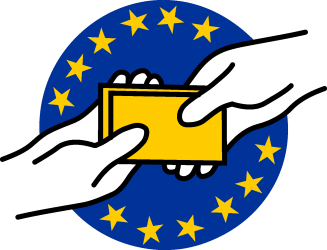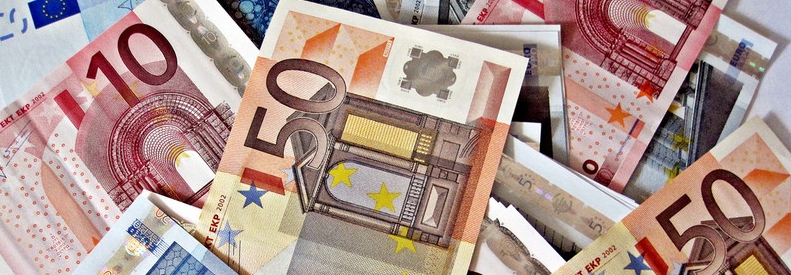Instead of injecting the equivalent of €2.2 trillion into financial markets, the ECB could have injected a quarter as much money and distributed €1,000 to all adult citizens in the eurozone.
The European Conservatives and Reformists (ECR) group in the European Parliament recently launched “Leer Geld”, an initiative led by MEP Sander Loones, to raise awareness about the effects of the monetary policy conducted by the European Central Bank (ECB).
The initiative is to be welcomed: monetary policy is too often overlooked by civil society, yet its impact on our lives has never been greater. Under its “quantitative easing” programme (QE), the ECB has been buying large quantities of government bonds since 2015. Surely injecting the equivalent of 20 percent of GDP into the eurozone finance sector cannot be without consequences.
Unfortunately, those consequences have not been very significant for growth and unemployment. Or at least, one could have expected more than the 1.3 percent GDP increase that the ECB claims it has produced through QE. To be fair, the abundant liquidity created by the ECB has forced the banking sector to improve its lending conditions, but it has had limited success in increasing the actual demand for productive credit in the real economy.
Against this background, important negative side effects have been observed in financial markets.
It is easy to see how ultra-low interest rates on long-term bonds cause an existential problem for pension and insurance funds. Negative interest on savings also disrupts the role of interest rates in capital allocation, leading to wrong incentives for investors, ultimately resulting in asset overvaluation. The whole financial system is being distorted through QE. Critics of the ECB such as Sander Loones and former ECB board director Juergen Stark are right to point this out.
We should however be cautious not to throw the baby out with the bathwater. Leaving the challenge of restoring growth only to member states and fiscal policy is an unhelpful approach in the current environment. As experienced by several member states, structural reforms do tend to be deflationary and politically risky. Therefore they must be accompanied by some degree of monetary expansion in order to fix the most fundamental issue in the eurozone: the lack of demand.
The ECB was right to resort to QE in 2015, but now it is time to learn from the shortcomings of the programme and try new approaches.
Print less, target better
One constructive approach that has been discussed more and more in Europe and even promoted by a group called “Quantitative Easing for People” is the so-called “helicopter money” idea. Simply stated, the ECB would create new money and distribute it to citizens’ bank accounts.
Inspired by the monetarist economist Milton Friedman, the concept of helicopter money would enable the ECB to do its job faster than with QE while involving much less risk for financial markets and its own balance sheet.
Here’s how: instead of injecting the equivalent of €2.2 trillion into financial markets, the ECB could have injected a quarter as much money and distributed €1,000 to all adult citizens in the eurozone.
What would happen then? Some consumers would spend it, leading to higher growth. Other recipients would save the money. Yet others would use the windfall to pay off debts.
According to a report by ING, such measure might have resulted in a boost of at least 2 percent of eurozone GDP, which is more than the ECB’s own model-based calculation of QE’s effect on the eurozone economy.
A key feature of helicopter money is that it bypasses national governments, thereby immediately taking away criticisms that the ECB is interfering with politics by buying government bonds. This would preserve the bond market’s role of providing incentives for governments to discipline themselves and get their fiscal house in order and to strengthen the economy.
If helicopter money works and the economy is growing at a decent pace again, the yield curve would normalise. Pension funds, banks and insurance companies would again receive higher returns on long term credit. The era of negative or zero rates would be over.
Helicopter money can be viable
Remembering the disastrous hyperinflation of the Weimar Republic, central bankers are often reluctant to even think about such free money. For sure, although the ECB’s power to create money is technically limitless, a solid framework is required before we can make this idea become a viable reality. It would ultimately come down to the ECB to design such a framework, but the following rules could be envisaged.
First, the independence of the ECB must not be jeopardised by such an operation. This means that only the ECB should design, decide and implement the helicopter money programme, without government interference.
Second, the ECB should announce clear rules for when to use or withdraw this instrument. For example, it could use helicopter money only when core inflation is below 1 percent AND real GDP growth is below a certain target too. This avoids making the blunt promise of using such an instrument regardless of whether the economy needs it.
Right now, the ECB appears to be improvising and not producing the desired results. Recent indications of growing inflation are strongly influenced by rising energy prices, and cannot necessarily be attributed to QE. In fact the return of inflation will have an even more negative impact on demand because it is not accompanied by a significant growth recovery. We might enter a new stagflation era.
Surely the ECB needs an audit. But let us not bluntly judge the institution without examining the ECB’s toolbox and considering new instruments which could be more effective in the future.
By Jan Musschoot and Eric Lonergan
source: https://euobserver.com/opinion/136898
Dr. Jan Musschoot is writing a book on finance. From 2011 to 2016, he worked as a risk manager at a European bank. Eric Lonergan is a writer, fund manager, and economist.


